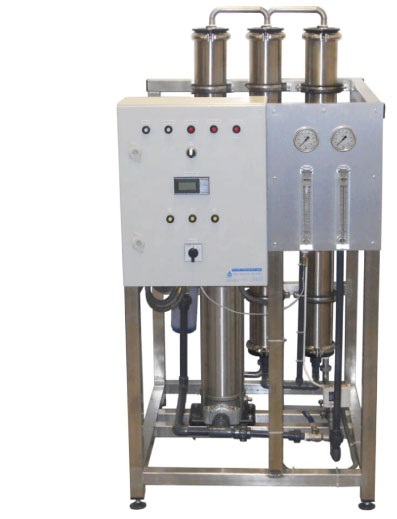Reverse Osmosis uses membranes that are partially permeable to keep out contaminants. Reverse Osmosis is based on a process that is used in bacterial cells (flow of a less concentrated solution through a semi-permeable membrane to a more concentrated solution). This technology has been copied and reversed by using additional pressure. This allows to obtain highly purified water similar to pure H2O solution. The most common parameter used to determine RO process is conductivity, which is expressed in mS/cm2 unit. Tap water in Poland has conductivity of about 400-700 mS/cm2, whereas RO water has conductivity of 5-10 mS/cm2. Industrial reverse osmosis is designed individually, and it is usually the last element of technological puzzle. Water before it is provided to membranes should be highly treated, devoid of iron, manganese, carbonate hardness, silica among others. These compounds can cause the so-called membrane fouling process leading to membrane degradation and reduced efficiency. It is possible to partially reverse this phenomenon by using an appropriate chemical cleaning performed by a professional company.




